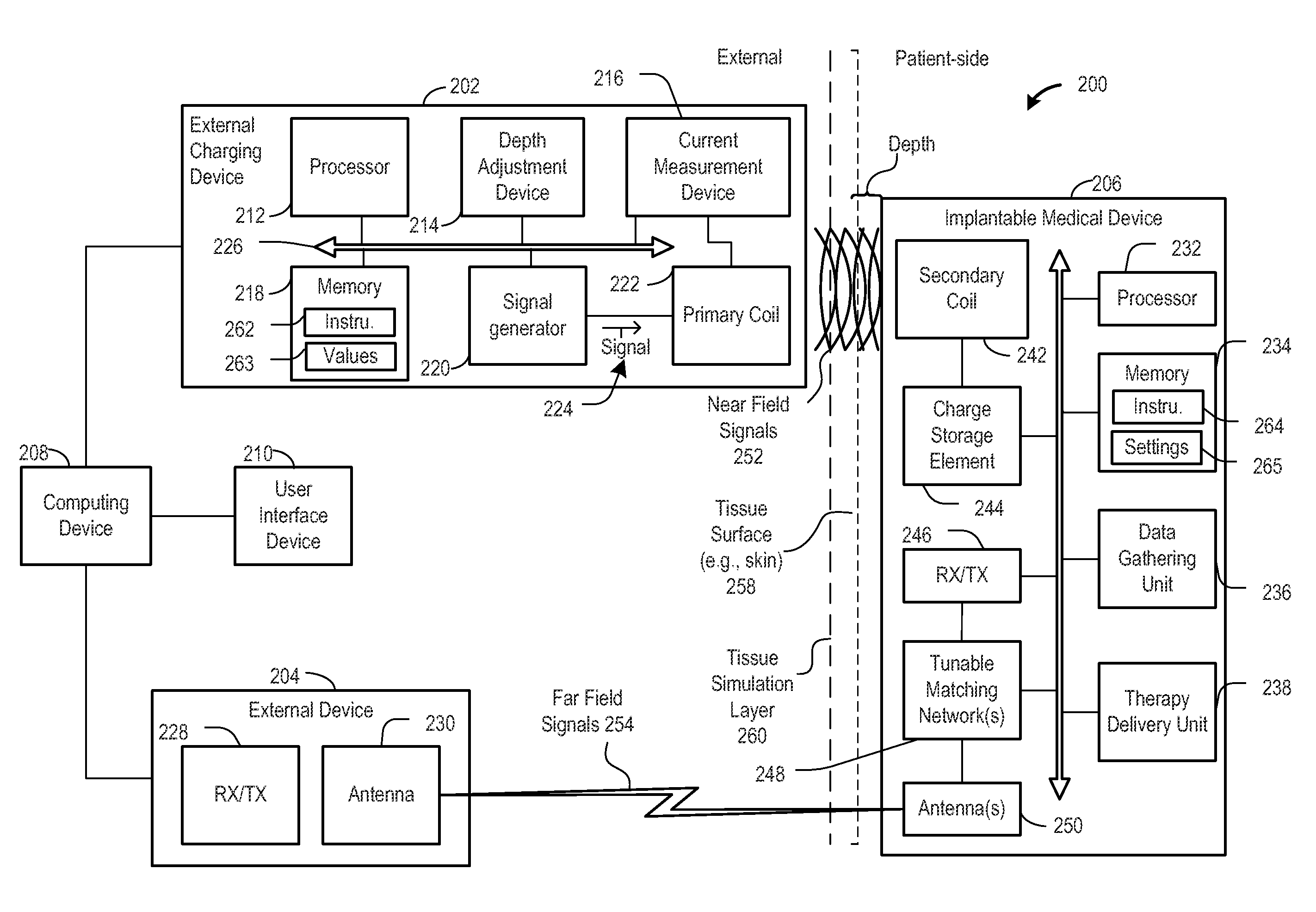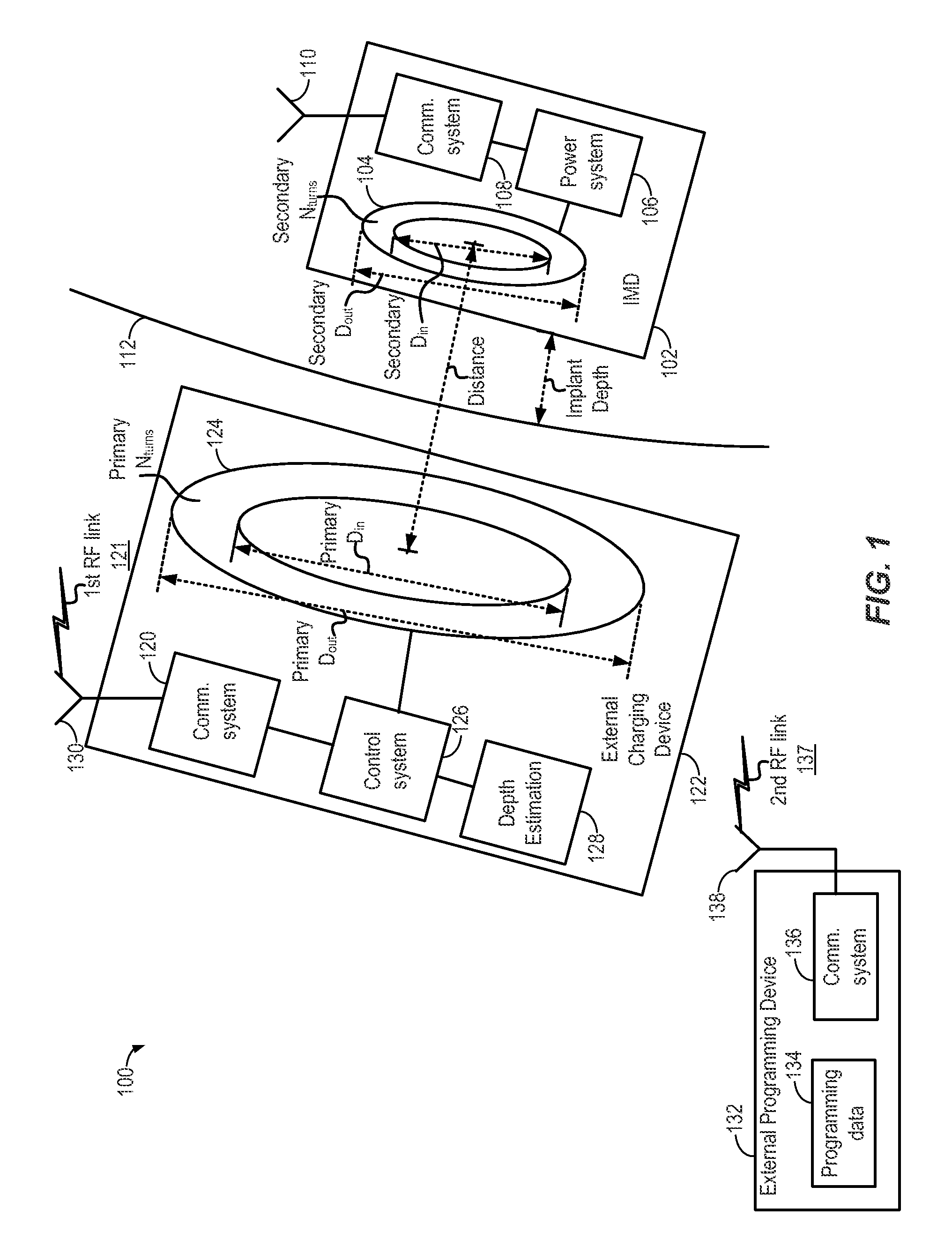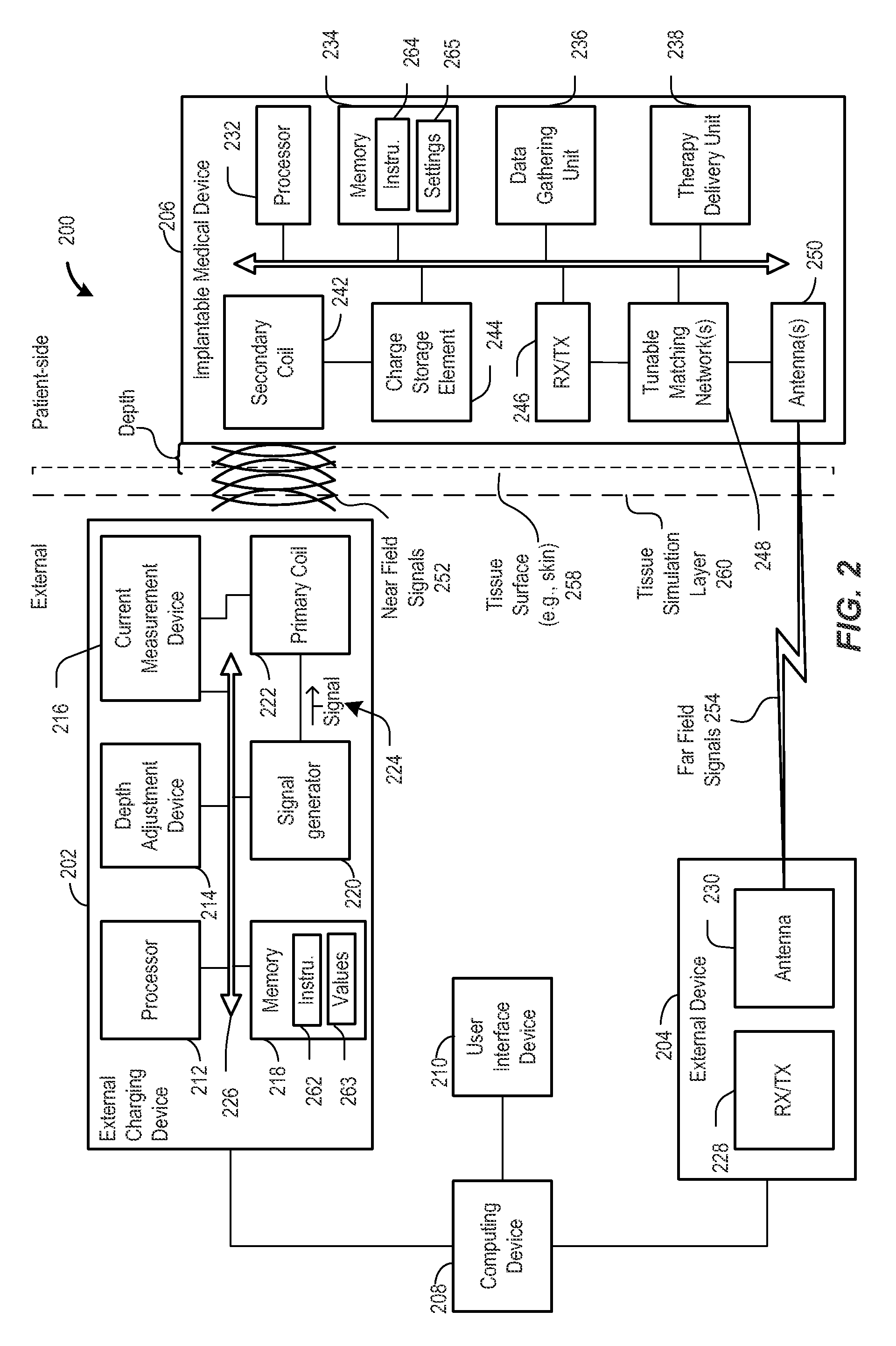Implantable medical device depth estimation
a medical device and depth estimation technology, applied in the field can solve the problems of difficulty in powering such implantable medical devices, inconvenient replacement limited power supply of onboard batteries of implantable medical devices, so as to reduce compliance with charging procedures, affect communication efficiency, and prolong charging time
- Summary
- Abstract
- Description
- Claims
- Application Information
AI Technical Summary
Benefits of technology
Problems solved by technology
Method used
Image
Examples
Embodiment Construction
[0018]FIG. 1 is a block diagram of a first particular embodiment of a system 100 to estimate a depth of an implantable medical device 102 within tissue of a patient 112 during charging of the implantable medical device 102. For example, the implantable medical device 102 may be charged by an external charging device 122 via inductive coupling of a primary coil 124 of the external charging device 122 and a secondary coil 104 of the implantable medical device 102. Current induced at the secondary coil 104 may be rectified and applied to a battery of a power system 106 of the implantable medical device 102.
[0019]In a particular embodiment, the implantable medical device 102 includes a communication system 108. The communication system 108 may include one or more antennas, such as an antenna 110. The communication system 108 may be used to send information from the implantable medical device 102 via the antenna 110 and / or to receive information at the implantable medical device 102 via ...
PUM
 Login to View More
Login to View More Abstract
Description
Claims
Application Information
 Login to View More
Login to View More - R&D
- Intellectual Property
- Life Sciences
- Materials
- Tech Scout
- Unparalleled Data Quality
- Higher Quality Content
- 60% Fewer Hallucinations
Browse by: Latest US Patents, China's latest patents, Technical Efficacy Thesaurus, Application Domain, Technology Topic, Popular Technical Reports.
© 2025 PatSnap. All rights reserved.Legal|Privacy policy|Modern Slavery Act Transparency Statement|Sitemap|About US| Contact US: help@patsnap.com



